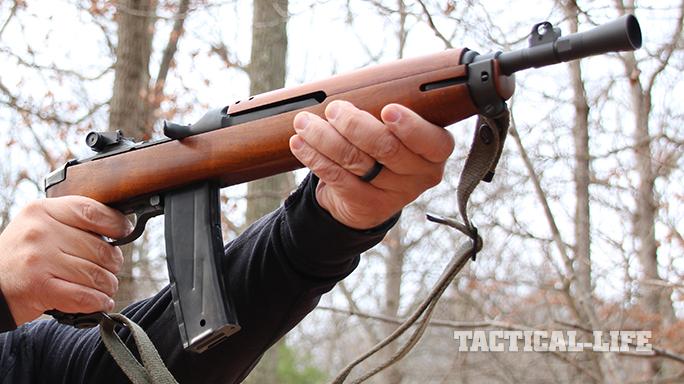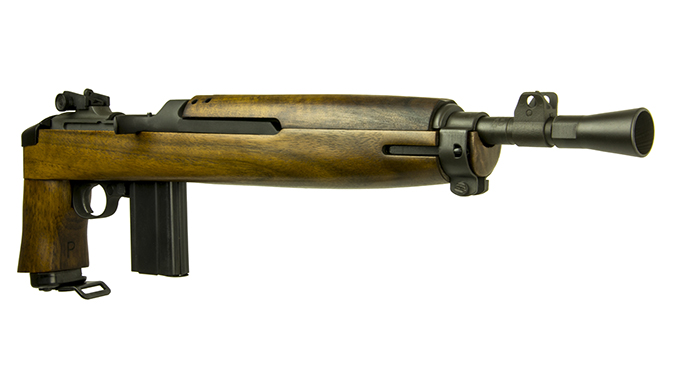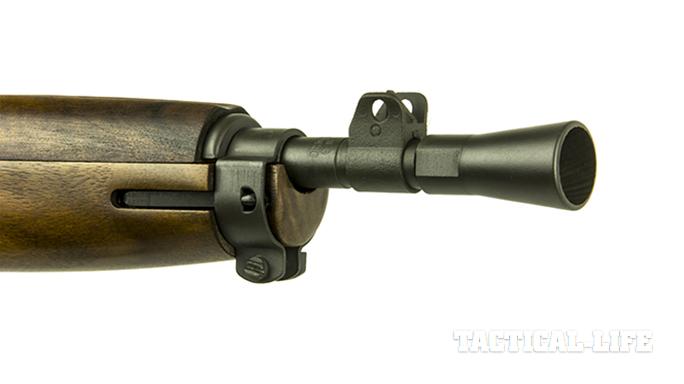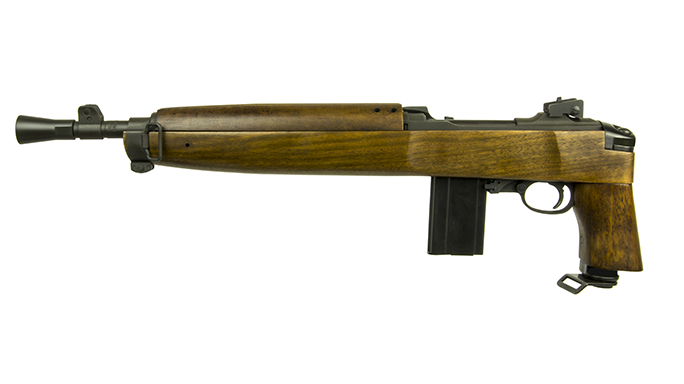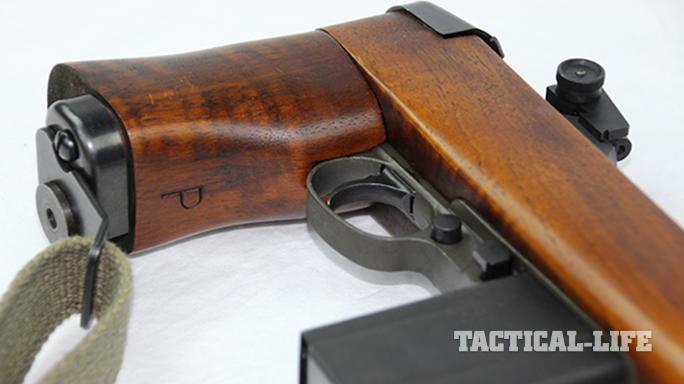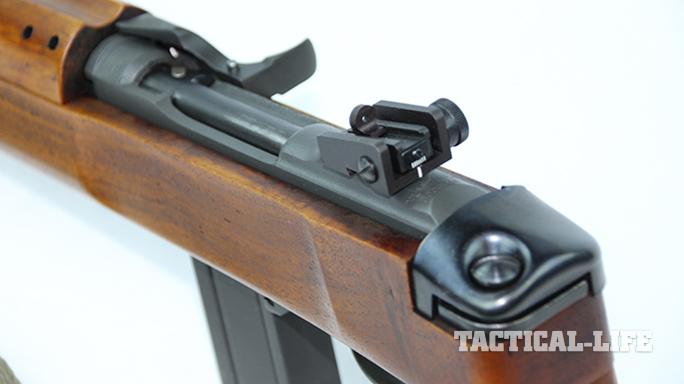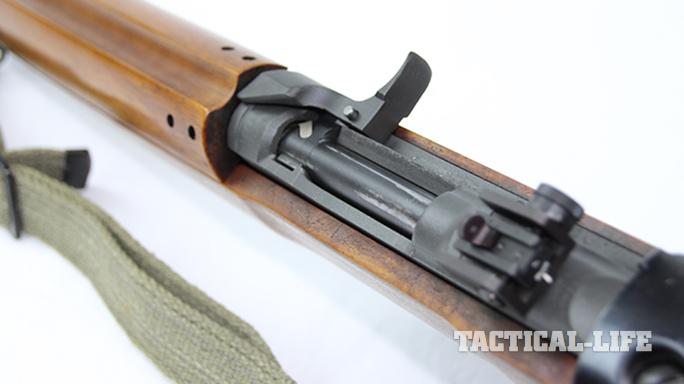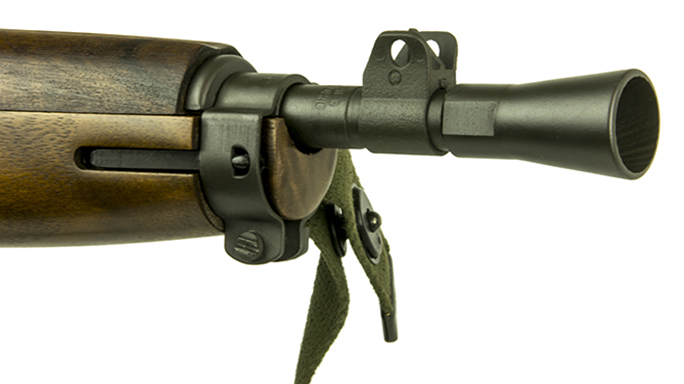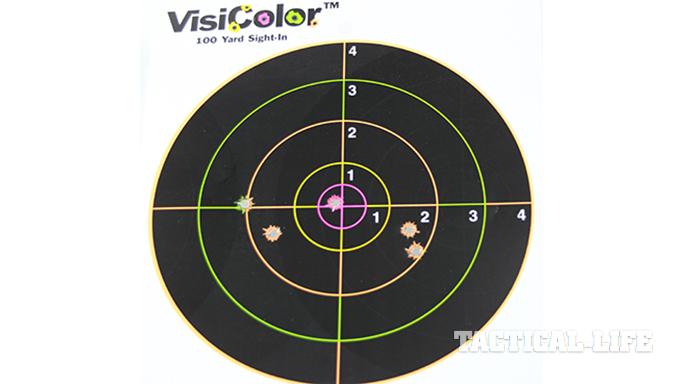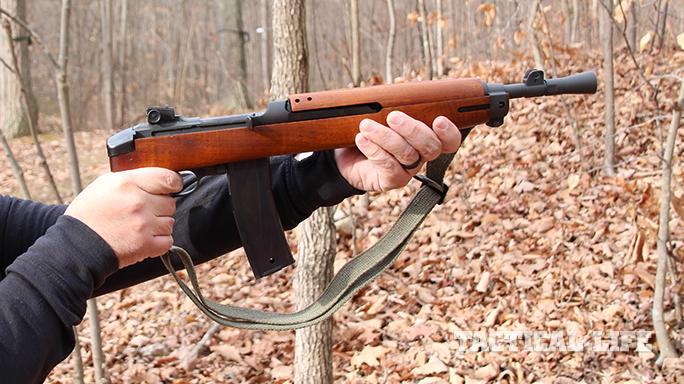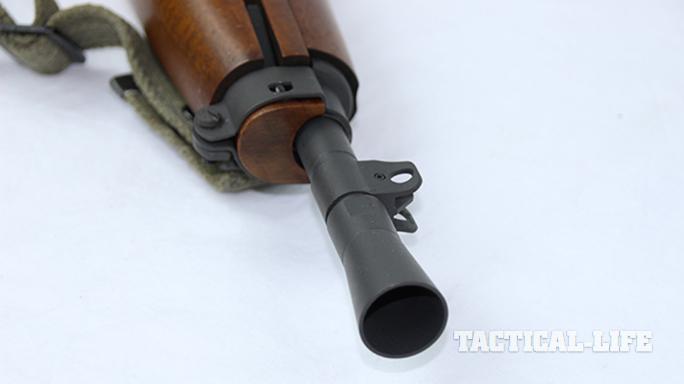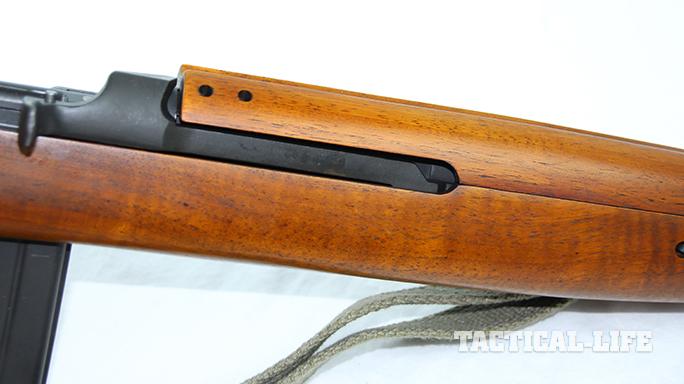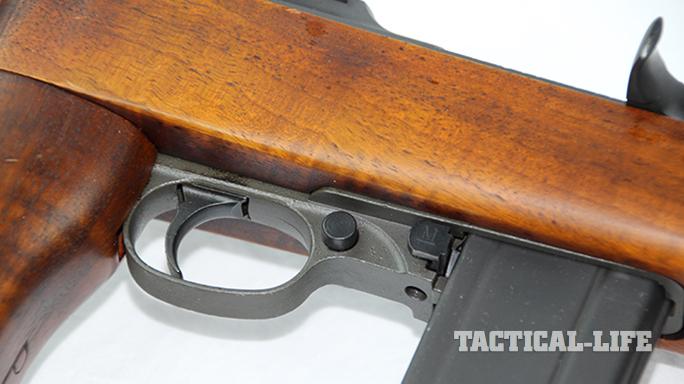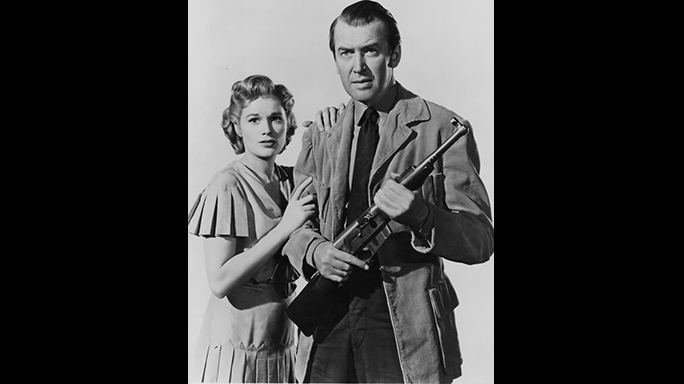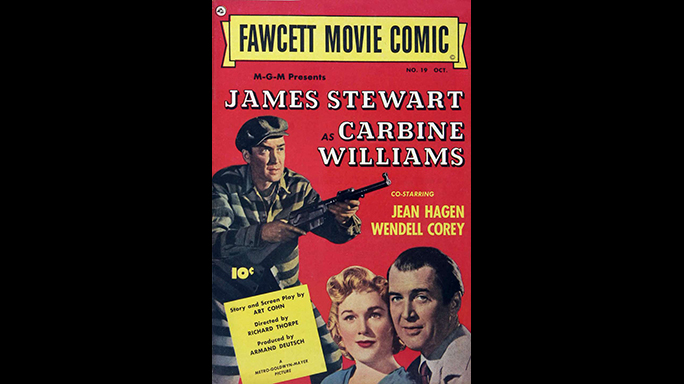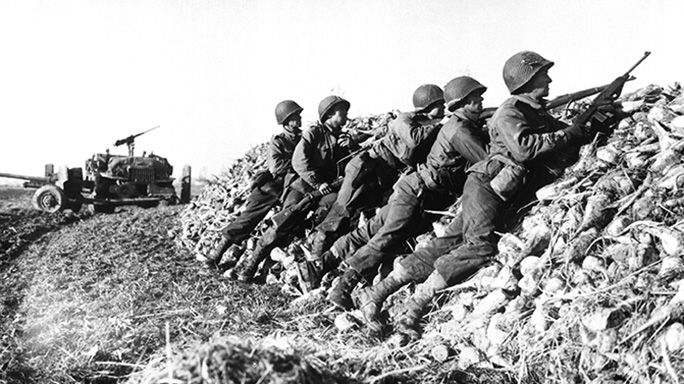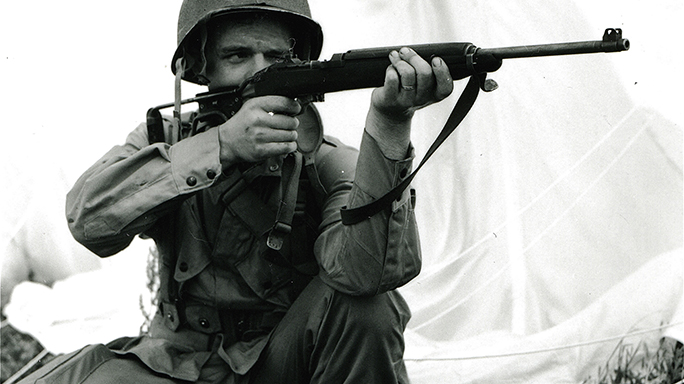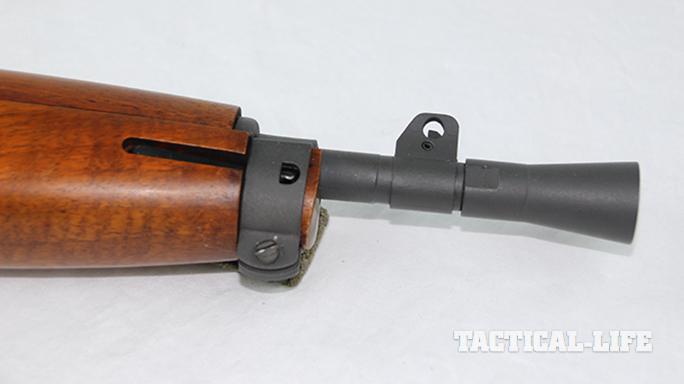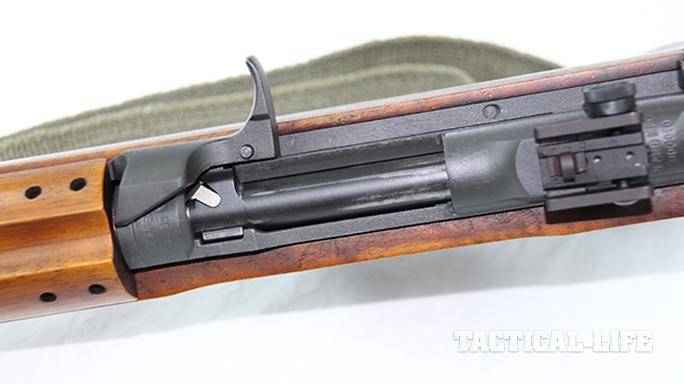Among the arms of World War II, few are as distinct as the M1 Carbine. Compared to the M1 Garand, the M1 Carbine was a featherweight at just over 5 pounds unloaded. Even by modern AR standards, that is incredibly light. This in turn made the little rifle incredibly popular with troops despite its significantly less-powerful .30 Carbine chambering. Still, this rifle saw service among American troops in every engagement from WWII to Vietnam and continued use by our allies and friends long after that.
The M1 Carbine was originally designed for troops that did not need a full-sized battle rifle. Rear-echelon troops, truck drivers and specialized soldiers found that the heavy and long M1 Garand was unwieldy but wanted something more than a pistol. The M1 Carbine filled the gap between the two, being much shorter and lighter than the Garand but offering far more effective range and accuracy than a .45 ACP 1911 pistol.
It is fitting then that an actual M1 Carbine pistol should become available. The new Advisor M1 handgun from Inland Manufacturing is a completely historically accurate reproduction of this classic firearm with the exception of the barrel length. Inland has also included some interesting historic features that are not found on every M1 Carbine. The Advisor M1 is a semi- automatic, short-stroke-piston-operated pistol that uses either a standard 15-round box magazine or an extended 30-round magazine.
Advertisement — Continue Reading Below
- RELATED STORY: International Harvester’s Post-WWII M1 Garand Rifles
It is also fitting that such a pistol should come from Inland Manufacturing, which bears the same name as one of the original military contractors that built the M1 Carbine. Inland was a division of General Motors, and it made the vast majority of the M1 Carbines used in World War II and Korea. Inland Manufacturing is a separate company that manufactures new, identical reproductions to the M1 Carbine’s original military specifications.
While over 6.5 million M1 Carbines were made, finding an original surplus model gets harder and harder. There are still millions languishing overseas in old foreign military depots, and a few are re-imported every now and then. The Civilian Marksmanship Program (CMP) had a few for sale, but those are long gone and not likely to be available again anytime soon. This is a key reason why modern manufacturers have been making M1 Carbines for civilian sale.
Advisor M1 Features

The Advisor differs from any military M1 Carbine with its short 12-inch, steel barrel, although there is some historical evidence of Carbines that were modified with shortened barrels. This barrel is topped off with a cone-shaped flash suppressor based on the T23 (M3) flash suppressor, except that this one is attached to the threaded muzzle and not to the front sight. The muzzle has 1/2×28-tpi threading, so a different muzzle device or suppressor can be installed. All of the metal bears WWII-style Parkerizing as well.
Advertisement — Continue Reading Below
The iron sights consist of a non-adjustable front sight post protected by two steel ears and a late-war-style, fully adjustable rear sight. The rear sight is dovetailed into the receiver and allows for easy windage and elevation adjustments. The barrel and action are held in place within the stock via a Type 2 barrel band, which obviously has no bayonet lug. Interestingly, while almost all of the surplus M1 Carbines found today have a bayonet lug, originals did not—this feature wasn’t added until the very end of WWII.
The walnut stock is also of the late-war variety, featuring a “low wood” design. Originally, the stock was made with a spacer that closed the gap (“high wood”) between the stock and handguard and covered the charging handle. This was found to be a weak spot prone to cracking, and the “low wood” design was introduced to leave the charging handle exposed. The walnut handguard, which matches the stock perfectly, is also of the late-war, four-rivet variety for added strength. The bolt is a round, late-war variant as opposed to the early flattop bolt.
Digging Deeper

There are some early war features on this gun. The stock has a straight design as opposed to the “potbelly” style found in late-war examples, and most interesting to me is the early-war push-button safety. It is not unusual to find a mix of early- and late-war features on a surplus M1 Carbine, as many were upgraded and remanufactured after and during the war. But the push- button safety is rare, and most rifles were armory upgraded with a lever safety. This is because the safety and magazine release are located close together, and since they were both push buttons, there was an increased likelihood for operator confusion in the heat of battle. A safety lever was deemed a better option.
Advertisement — Continue Reading Below
So why, in a new M1 Carbine pistol, did Inland Manufacturing opt for the early-style stock and safety? The obvious answer is that this is a pistol, not a rifle, and given the pistol-grip design, it is easier to operate a push-button safety rather than a lever-operated one, especially given its location at the front of the triggerguard.
The pistol grip itself is a separate piece of walnut that matches exactly the original M1A1 Paratrooper model, down to the “P” proof mark on the front. Interestingly, only Inland made the M1A1 during the war. As this rifle was designated for airborne troops and size was a major consideration, it featured a folding wire stock and a pronounced pistol-grip design. The modern Advisor M1 pistol has copied this exactly down to the sling attachment point at the bottom of the grip and the receiver end cap, both of which feature the needed cutouts for attaching an original-style wire folding stock. Indeed, the Advisor M1 is ready to be registered as a short-barreled rifle (SBR) so the user can install a folding stock.
The controls on the Advisor M1 are identical to those found on most any M1 Carbine, and they are all located on the right side. The push- button magazine release is located in front of the triggerguard, just behind the magazine well. The push-button safety is located about half an inch behind that. The operating rod works the exposed rotating bolt and features a button tab that allows the operator to lock the bolt open. The action will not lock open on an empty magazine.
Advertisement — Continue Reading Below
- RELATED STORY: Examining the Machine Guns, Handguns, and Rifles of Dunkirk
Unsurprisingly, given Inland’s commitment to quality and historical accuracy, the fit and finish of the Advisor M1 pistol is outstanding. The wood is spot on and really gives the sense that you are holding onto a piece of history in a polymer world. I have owned several original military-surplus M1 Carbines, and the Parkerized metal parts on this pistol are truly well done.
It is worthwhile to note that the Advisor M1 is chambered in the original .30 Carbine. This is a straight-walled, rimless, .30-caliber round that resembles a thin .357 Magnum cartridge (they do make revolvers for the .30 Carbine) with a 110-grain bullet. Some have claimed that this cartridge is anemic and unsuitable for combat use, but there were hundreds of thousands of WWII soldiers who preferred the M1 Carbine over the M1 Garand in combat. It seems odd that they would choose an anemic round. In fact, the .30 Carbine produces over twice the muzzle energy of a 9mm pistol, or, to be exact, 792 foot-pounds of energy (fpe) from the 12-inch-barreled Advisor versus 368 fpe from a Glock 34. This makes the .30 Carbine Advisor M1 an extremely effective firearm for personal or home defense.
In The Field

On the range, I found the sights a bit small and hard to see. There is a channel at the top of the handguard that allows the front and rear sights to align, but these are rifle sights, not pistol sights. Handling the Advisor also requires a bit of getting used to, and at 4.5 pounds and 21 inches in length, the pistol differs from the rifle almost entirely due to the loss of the stock. It is, however, extremely compact and easy to transport, which may be the idea, as this can be an excellent trunk gun.
Advertisement — Continue Reading Below
The weight does soak up recoil, and while there is some perceptible muzzle flip, the Advisor M1 can be fired comfortably all day. The rifle comes with one 15-round, newly manufactured box magazine and an original-style canvas sling.
For accuracy testing, I used a stable benchrest and sandbags at 25 yards, and I wasn’t disappointed despite using the iron sights. The Advisor M1’s accuracy was very good, and most groups averaged under 2 inches. This shows the benefit and continued popularity of megapistols, which provide higher capacity, greater muzzle energy and longer-range accuracy than standard handguns.
Operators who like the cartridge as well as the use of a historic firearm will likely make some non-historic changes for maximum effect. Others will simply accept the Advisor M1 as it is for its historical significance and design, and possibly even register it as an SBR and add a folding stock. One more interesting historical note about the M1 Carbine: One of the men who developed this rifle for Winchester was David Marshall “Carbine” Williams, who developed the unique short-stroke gas piston system the rifle uses. He worked on this project as part of a prison work release program, where he was serving time for murder. He reformed himself and went to work for Winchester after his release, and they even made a movie about him staring Jimmy Stewart called simply Carbine Williams.
Advertisement — Continue Reading Below
Inland Manufacturing continues to make historically accurate rifles and pistols for enthusiasts and collectors to enjoy without having to worry about risking damage to original collectible old guns. The Advisor M1 pistol represents a rare oddity that bears consideration. If you’re like me, you’ll file this in the category of “must-have before kicking the bucket.”
Caliber: .30 Carbine
Barrel: 12 inches
Advertisement — Continue Reading Below
OA Length: 21 inches
Weight: 4.5 pounds (empty)
Grip: Walnut
Advertisement — Continue Reading Below
Sights: Adjustable
Action: Semi-auto
Finish: Parkerized
Capacity: 15+1
MSRP: $1,239
For more information, visit inland-mfg.com or call 877-425-4867.
This article was originally published in “Tactical Weapons” February/March 2017. To order a copy, visit outdoorgroupstore.com.
